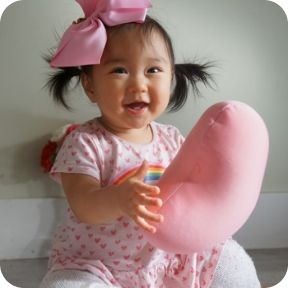Congratulations! Getting new teeth is exciting! Teething is a normal development and reaction when teeth break through the gum.
- When? – On average, baby teeth erupt between 6 months old to 3 years old. There are twenty baby teeth in total!
- What are the symptoms? – You may be seeing your little one putting their fingers in the mouth more, biting on finger or toy a lot, rosy cheek, more saliva production and drooling, more grumpy and difficulty sleeping. However, remember true high fever is not directly linked to teething. Sometimes you may also see swelling or raised gum in the area.
- How to help? This can be a tough time for both baby and parent. If your little one is experiencing discomfort with the eruption of their new teeth, there are a few options for soothing their sore gums. Gentle gum massage and offering something cold for your baby to chew on can help the process. Frozen carrots or other fruits/veggies can be a great option for your little one to munch on while also soothing their discomfort.
- We advise to not use the amber necklace to prevent choking hazards.
- Infant Tylenol could be the last resort if your little one is not sleeping well at night. There are other over-the-counter products for teething, such as Camilia. It is more herbal based and no good scientific support of its effectiveness. Follow the label if you choose to use those products but remember to avoid teething products that contain benzocaine.
